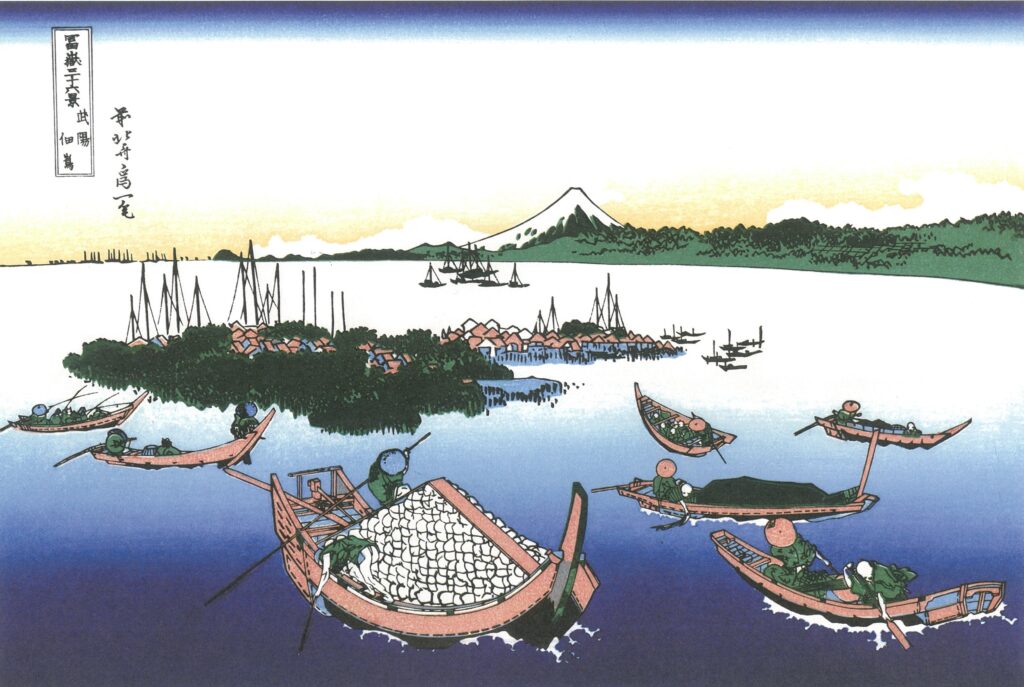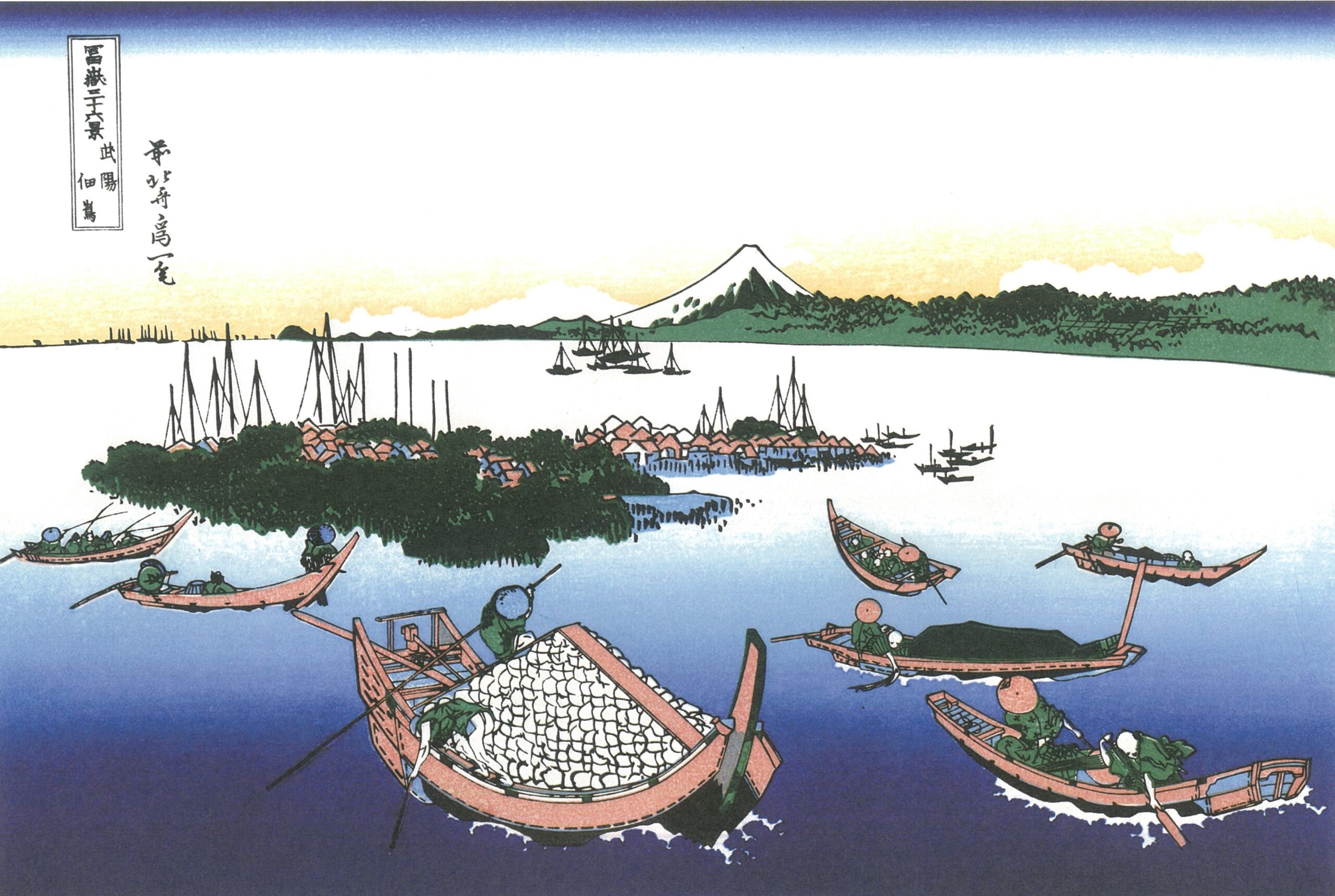Katsushika Hokusai’s Ukiyo-e I will explain Tsukudajima in Musashi Province in Thirty-six Views of Mount Fuji.
This ukiyo-e is the current Tsukudajima in Chuo Ward, and now it is no longer an island, just a place name.
Tsukudajima was originally a floating island formed naturally at the mouth of the Sumida River.
When Ieyasu Tokugawa established the shogunate in Edo, he invited the fishermen of Osaka (Tsukuda village, Settsu) to Edo in the Edo period and created a fishing village here.
It is said that the shogunate protected the fishermen of Tsukudashima by giving them the privilege of preferentially fishing in the waters near Edo.
Every year from November to around March of the following year, whitefish fishing using four reins was actively carried out, and it became one of Edo’s customs.
“Tsukudani”, a boiled dish made from seafood harvested around Tsukudajima, is still famous today.
The fishermen of Tsukudajima boiled down small fish and shellfish in salt and soy sauce for their own use as food in bad weather and as food on board when they went out fishing.
When a lot of small fish were caught, a large amount of tsukudani was made and sold. It became popular among common people in Edo due to its high preservability and low price.
In addition, it is said that samurai warriors who went to Sankinkotai brought it back to various parts of the country as a specialty of Edo and as a souvenir, and it spread throughout the country.
In this ukiyo-e scene, when the western sky is dyed in twilight, boats for various purposes, such as boats carrying people, boats carrying goods, and fishing boats, come and go around the island.
Ships showing various movements can be seen in the ukiyo-e “Hokusai Manga” published about 15 years ago. The shape of the cargo on the ship in the foreground resembles the shape of Mt. Fuji.
This ukiyo-e is from around 1830 to 1832. Hokusai is around 72 years old.



